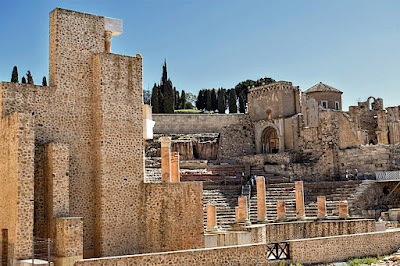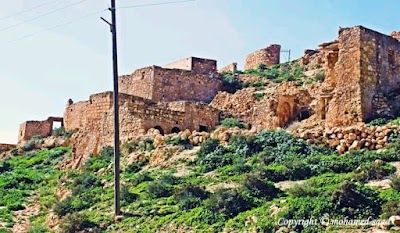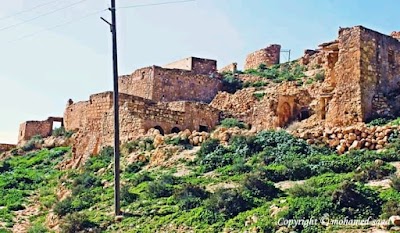Derj (درج)
Overview
Dirj, nestled in the Jabal al Gharbi District of Libya, is a captivating destination steeped in centuries of history. Perched about 550 meters above sea level within the rugged terrain of the Nafusa Mountains, this ancient Berber village is renowned for its unique stone architecture and intricate alleyways, showcasing the resourcefulness and craftsmanship of its inhabitants.
Rich Berber Heritage
The origins of Dirj can be traced back to the indigenous Berber culture, also known as the Amazigh, who once thrived in the region. The village's construction utilized locally sourced materials like stone and clay, characterized by thick stone walls, domed roofs, and small arched doorways. These architectural features were ingeniously designed to endure the harsh desert climate, providing essential insulation against the scorching heat and chilly nights.
Vertical Village Design
One of the most striking aspects of Dirj is its vertical layout. The village gracefully ascends and descends the mountain slopes, with homes and pathways intricately integrated into the rocky landscape. This verticality not only facilitated defense against potential invaders but also optimized space in an area with limited resources. The narrow, winding streets often provide cool shade, creating a natural air conditioning system that effectively combats the summer heat.
Ingenious Construction Techniques
Constructing Dirj was a labor-intensive and communal endeavor. The stones were skillfully cut and fitted together without the use of mortar, relying on precise craftsmanship to ensure stability. Clay and mud were applied to plaster the walls and roofs, adding insulation and protection. Despite the absence of modern technology, the Berber builders of Dirj demonstrated remarkable ingenuity and technical prowess.
Water Management Innovations
In this arid region, water is a precious resource, prompting the residents of Dirj to develop an innovative system for its management. They constructed underground cisterns to collect and store rainwater, ensuring access during dry spells. Many of these cisterns remain operational today, highlighting the sustainable practices of the village's early architects.
Community Life
Social life in Dirj revolved around communal spaces such as the central square and the mosque, often the tallest and most prominent structure in the village. The mosque's tower served a dual purpose, functioning as both a call to prayer and a lookout point for potential threats. The close-knit community fostered strong family ties, with residents often living in proximity and sharing resources.
Preservation of Heritage
Throughout the years, Dirj has faced various challenges, including modern influences and urban migration. However, there have been concerted efforts to preserve its unique heritage and traditional lifestyle. Some ancient buildings have been restored, and interest among tourists is growing, drawn to the village's timeless beauty and historical significance.
A Living Museum
Today, Dirj stands as a living museum, a testament to the resilience and creativity of the Berber people. Visitors are invited to wander through its maze-like streets, explore ancient homes, and soak in the stunning views of the surrounding mountains and valleys. The village offers a glimpse into a bygone era, where every stone and pathway tells a story of survival and community.
Dirj is more than just a picturesque village; it symbolizes human adaptability and creativity. In the face of a harsh and unforgiving environment, the people of Dirj forged a thriving community that continues to inspire and educate future generations. By preserving and celebrating this rich heritage, we honor the legacy of those who came before us and ensure their stories endure for years to come.









